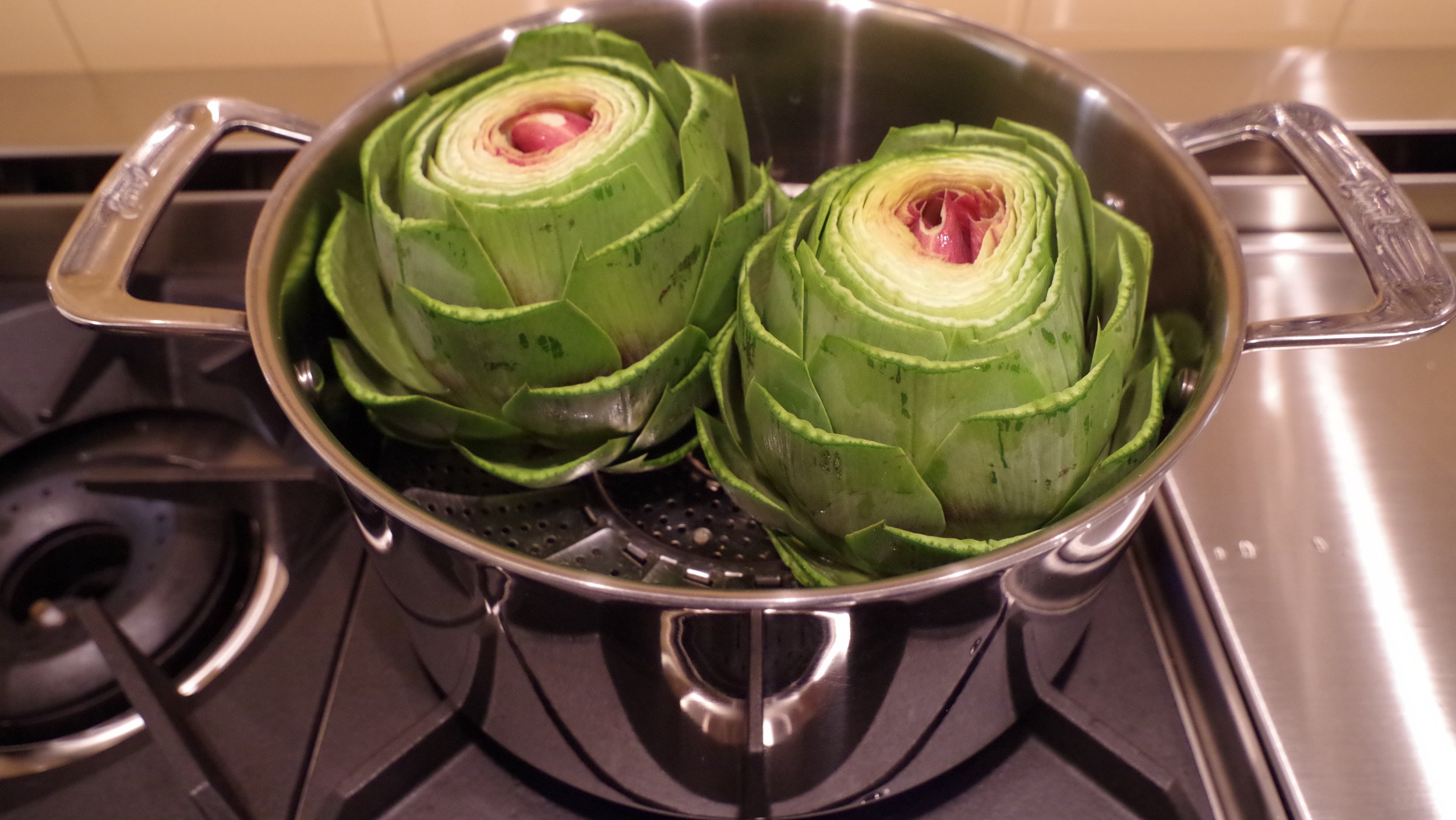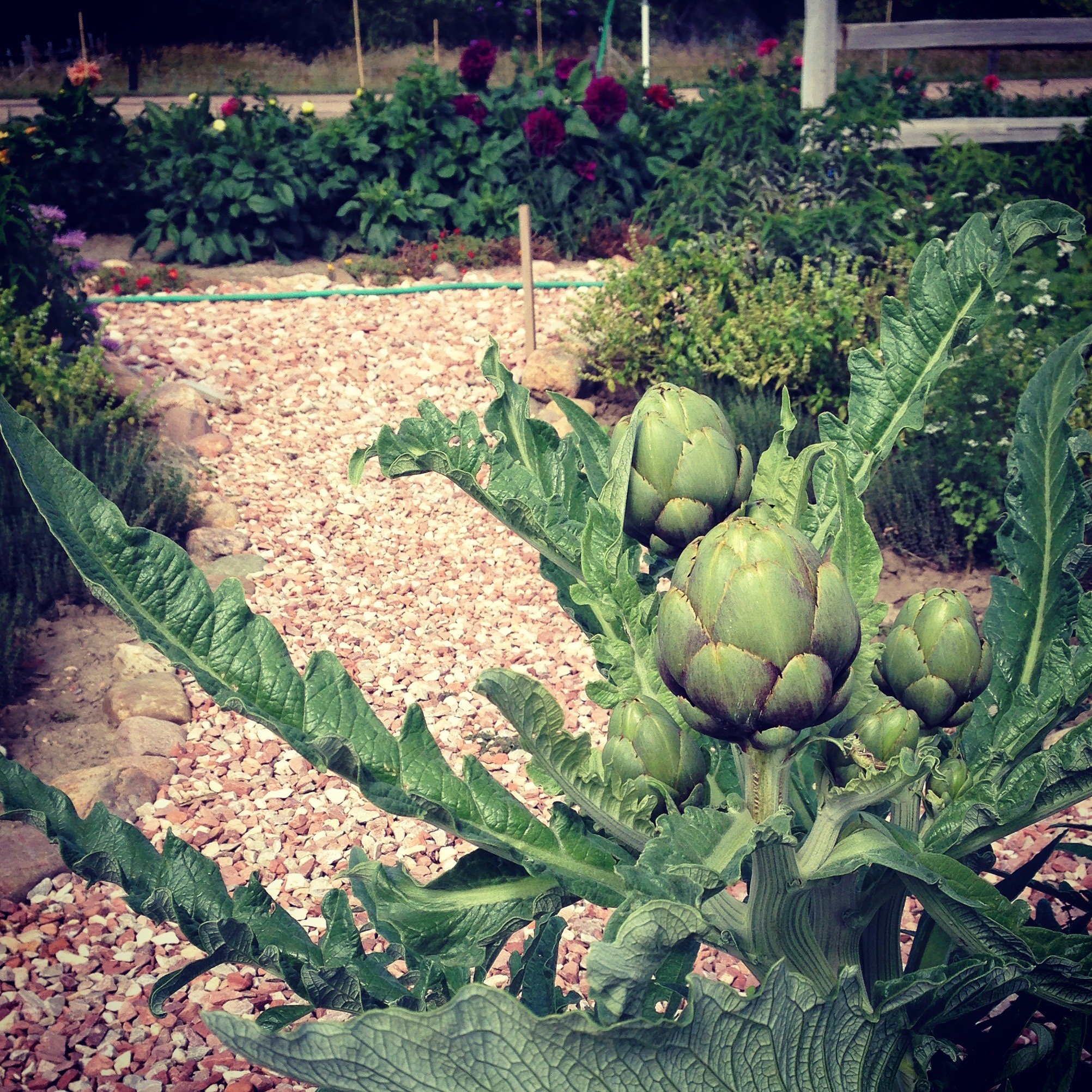Greeley food writer welcomes spring with versatile, good-for-you artichokes
Steaming artichokes is a simple, healthy cooking method that requires little preparation. Photo by Emily Kemme.
By Emily Kemme
Spring has sprung, and if you relish cooking with fresh seasonal produce, artichokes should be on your plate.
What is an artichoke?
Artichokes are perennial vegetables that grow on a sturdy stalk, reaching a height between 4 to 6 feet. Related to the thistle family, it’s known by the name globe artichoke, French artichoke and green artichoke in the United States; you can find them throughout the spring, summer and early fall in grocery stores and farmers markets.
The vegetable was primarily cultivated in Sicily and other Mediterranean regions, beginning in the late 15th century, before expanding to other areas across the world. It remains very popular in Italian cuisine today.
In 18th century France, artichokes were used more for their perceived medicinal benefits, particularly for the elderly and those having a “phlegmatic and melancholy disposition,” according to Louis Lemery in his Treatise on Food. In 21st century lingo, being phlegmatic means someone whose personality is calm, composed and stolid.
At the time, because artichokes were reputed to be aphrodisiacs, women weren’t allowed to eat them. Thanks to rising hemlines and women’s liberation, the artichoke became a unisex food.
Italy is the largest artichoke producer in the world, followed by Egypt, Spain and Peru. The vegetable was brought to the United States in the 1860s by French settlers in Louisiana. California artichoke crops are the largest in this country.
How to cook an artichoke
The thorny green globes of the vegetable might seem daunting if you’ve never tried them. But they’re one of the simplest vegetables to cook and don’t take much preparation.
The key to a tasty artichoke is selecting one that is deep green, tinged with purple with stems that aren’t withered. Take time to inspect each one by gently pulling the leaves apart to assure they aren’t riddled with worm holes. The leaf interior should be smooth and blemish-free.
There are several edible parts to a mature artichoke: the tender section of its buds before it blooms into a fuzzy purple flower, the tender heart after the hairy core is removed and a short segment of the base stem. Very young vegetables can be eaten whole after trimming some of the tough outer leaves.
Artichokes can be grown in Colorado’s arid climate. They reach a height between 4 to 6 feet. Photo by Emily Kemme.
The healthiest (and easiest) method for cooking artichokes is steaming. Trim stems to one inch and slice off about half an inch from the top. If you don’t want to be pricked while eating, clip off the ends of the leaves with a scissor to remove the thorns. It doesn’t affect the taste, but makes a more attractive presentation.
Place a steamer basket in a tall pot with a lid. Place several sprigs of fresh thyme and one peeled garlic clove in the pot and fill with cold water until it reaches about 1 inch above the steamer. Add prepared artichokes and cover. Bring water to a boil, reduce to simmer and steam for 50 minutes, or until base of globe is tender and leaves are easy to remove. Add water to pot while steaming if needed.
Once cooked, cut in half, scoop hairy center out with a spoon and serve with sauce of choice.
Artichokes have a mild vegetal taste. The steamed leaves may be dipped in melted butter with lemon juice, served with mayonnaise, aioli, hollandaise sauce, olive oil or a vinaigrette. You can also enjoy the leaves without a sauce. The tough upper part of the leaf isn’t eaten; discard it after scraping off the fleshy base with your teeth.
Artichokes have myriad health benefits
Artichokes purportedly can lower blood sugar, improve digestion and contribute to heart and liver health. Cooked, a medium artichoke is low in fat and high in fiber with loads of vitamins, minerals and antioxidants. It’s a good source of folate, vitamins C and K, magnesium, phosphorus, potassium and iron. One artichoke has nearly 7 grams of fiber, 4 grams of protein — all packed into 60 calories.
Of course, it depends on how you eat them: a jar of marinated artichoke hearts contains around 60 calories, but a serving is only two pieces. And dipping leaves in hollandaise, while delicious, should be added into caloric calculations.
Dishes where artichokes shine
Artichokes are a versatile veggie, but one of their most natural pairings is in Italian cuisine. Sprinkle across a pizza or sauté with roast chicken; because they have a mild taste, most of the flavor will be derived from a dish’s sauce and seasonings.
They are also perfect for dressing up an omelette or quiche. Grilling artichokes can intensify their flavor.
For an unusual apéritif, Cynar is an amaro, or herbal liqueur, made from 13 herbs and plants, the most prominent of which are artichokes. Dark brown and bittersweet, the herbal components in amaro stimulate your appetite. Drink it alone or mix with club soda and a slice of lemon or orange for a refreshing sipper.


